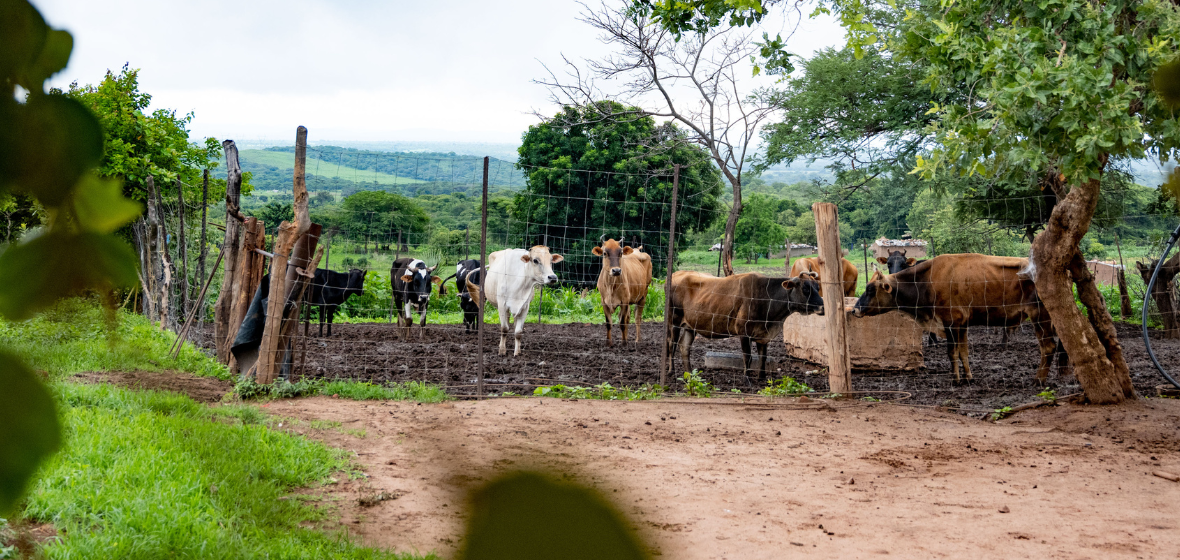
BLOGS, ARTICLES AND NEWS
Get updates directly from the CA4SH Global team and stakeholders
Soil Health, Carbon, and Ecosystems – An Overview of Interdependencies that are Vital for the Planet
This new paper from IFDC outlines the role of soil in mitigating and adapting to the effects of climate change while also being influenced by these changes – a complex two-way relationship.
The authors first provide an understanding of this relationship before discussing the direct and indirect pathways through which soil health impacts carbon sequestration. Next, they highlight global evidence on soil health’s role in ecosystem services, including its ability to promote resilient, climate-adaptable systems.
Then, they discuss how these beneficial effects are under threat, as the increase in climate change-induced events limits the ability of soil to mitigate and manage climate change. Finally, they conclude by identifying areas where further action and research are needed.
Refugee-led initiative fosters soil health and resilience in Uganda
The following case study is one of 20 that illustrate the Food Systems Call to Action in motion. Each story demonstrates innovative solutions and collaborative efforts across sectors, geographies, and communities, highlighting how food systems are being transformed to support people, nature, and climate. Together, these examples underscore the global momentum towards resilient, equitable, and sustainable food systems.
Op-ed: Empowering Refugees and the Vital Role of Community-Led Initiatives in Nakivale
Nakivale refugee settlement was established in 1958 and is the 8th largest refugee settlement in the world, located approximately 200 km away from Kampala, Uganda'. It is one of the oldest refugee settlements in Uganda and contains 79 individual villages.
Recently, food distribution has reduced, creating a food shortage worsened by persistent drought and soil exhaustion. Since 2023, the communities’ needs have outpaced available resources.
Mbilizi Kalombo is a young Congolese refugee living in Nakivale Refugee Settlement. He is the Executive Director and Co-Founder of KYETE BIINGI TAI NYEME - a refugee-led, community-based organization seeking to improve the lives of refugees, including by promoting sustainable soil management practices.
World leaders at COP28 urged to prioritize soil health in climate plans
Conserve soils to meet global climate, land and biodiversity goals, say experts.
Read the full story from CIFOR Forest News
Image: Soil testing in Malawi. Photo by Kelvin Trautman/CIFOR-ICRAF
Op-Ed: Biochar Carbon Removal Strengthens Global Food Security
By: Wendy Lu Maxwell-Barton, International Biochar Initiative
Since September of 2023, the world has known that the global community is not meeting the goals set in the Paris Accord— and the window to meet them without exceeding 2 degrees C or warmer is rapidly closing. The United Nations Framework Convention on Climate Change’s (UNFCCC) Global Stocktake process emphasized both the need for emissions reductions, as well as carbon dioxide removal (CDR) to slow and eventually reverse climate change-caused global warming.
While CDR technologies come in many forms and scales, the technology funded at a very high rate to date is direct air capture, garnering some US$4B in funding, tax breaks, and other sources of government funding. Despite this, there is less well-known yet predominant CDR technology that simultaneously delivers improved soil health, strengthened food security, and increased farmer profits through increased crop yields and lowered input costs on top of carbon dioxide removal. What am I referring to? Biochar carbon removal.
Soil Health and Climate Change: Thoughts from COP28
“Dr. Leigh Ann Winowiecki, member of the International Fertilizer Development Center (IFDC) Board of Directors, and Dr. Ekwe L Dossa, IFDC Director of Soil Health and Agricultural Productivity, attended the United Nations Climate Conference (COP28), held November 30 to December 12, 2023, in Dubai, United Arab Emirates. We recently sat down with Leigh and Ekwe to discuss their insights from the event.”
Read the full story from the International Fertilizer Development Centre
There’s a rainbow in the clouds of climate change – if we act now
“Another year, another record. Recent news headlines seem to support the adage that records are made to be broken.
Yet while records are usually positive news in sport or the business world, they serve as grim reminders in the context of climate change, where unprecedented highs are best avoided and are also avoidable.”
Story from Éliane Ubalijoro, CEO, CIFOR-ICRAF
COP28 Presidency Puts Food Systems Transformation on Global Climate Agenda as More Than 130 World Leaders Endorse Food and Agriculture Declaration
The COP28 Presidency announced that 134 world leaders have signed up to its landmark agriculture, food and climate action declaration.
Click to read the details and download the press release and declaration.
Opinion: Restoring soil is vital for farmers facing climate change
With increasing droughts, initiatives to restore soil and manage water resources effectively are a necessity to ensure food security, but the clock is ticking, and they must be accompanied by investments in farmers.
By Aggrey Agumya, Sekai Mudonhi for Devex
What is biochar? Why an ancient farming technique could help fight climate change
“A new study estimates that biochar could capture as much as 3 billion metric tons of CO2 each year. Here’s how the process works.”
Read the full story from fastcompany.com
By Adele Peters
Biochar offers an accelerated pathway to global decarbonization, says new research
“The first-of-its-kind data highlights biochar’s potential to scale carbon removals as a win-win solution for people and the planet.
Biochar can potentially remove up to 6% of global emissions annually – the approximate equivalent of 3 billion tonnes of CO2 or the total emissions of 803 coal-fired power plants in one year.
Biochar also has a minimum removal potential of 10% in over 25 countries, concentrated in Africa, South America, and Eastern Europe, and can potentially reduce carbon emissions by over 30% in Eswatini and more than 20% in Malawi, Argentina, and Ghana.
The greatest carbon dioxide removal (CDR) potential – rests with the world’s biggest emitters, including China, the United States, Brazil, and India, who can chart a pathway for sustainable emissions reductions through biochar.”
Read the full article from the International Biochar Initiative
This is why soil health is key to mitigating the climate crisis
“A recent study has found that more than half of Earth's species live in the soil, with the study finding it was the world's most biodiverse habitat.
The importance of healthy soil around the world was the focus of a panel chaired by Tania Strauss, the World Economic Forum’s Head of Food and Water, at the Forum’s 14th Annual Meeting of the New Champions (AMNC) in Tianjin, People’s Republic of China.”
Read the full story from the World Economic Forum












